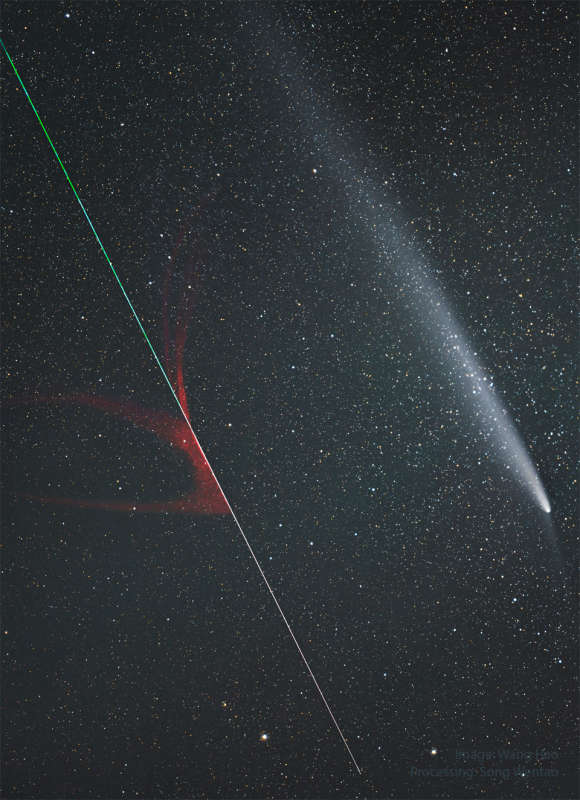Credit & Copyright: Wang Hao;
Processing: Song Wentao
Explanation:
How different are these two streaks?
The streak on the upper right is
Comet Tsuchinshan-Atlas showing an
impressive dust tail.
The comet is a large and dirty iceberg that entered the inner
Solar System and is
shedding gas and dust
as it is warmed by the Sun's light.
The streak on the lower left is a
meteor showing an impressive
evaporation trail.
The meteor is a small and cold rock that entered the
Earth's atmosphere and is shedding gas and dust as it is
warmed by molecular collisions.
The meteor was likely once part of a comet or
asteroid -- perhaps later composing part of its tail.
The meteor was
gone in a flash
and was only caught by coincidence during a
series of exposures documenting the
comet's long tail.
The featured image was captured just over a month ago from
Sichuan Province in
China.
Gallery:
Comet
Tsuchinshan-ATLAS in 2024
1999 2000 2001 2002 2003 2004 2005 2006 2007 2008 2009 2010 2011 2012 2013 2014 2015 2016 2017 2018 2019 2020 2021 2022 2023 2024 2025 |
Yanvar' Fevral' Mart Aprel' Mai Iyun' Iyul' Avgust Sentyabr' Oktyabr' Noyabr' Dekabr' |
NASA Web Site Statements, Warnings, and Disclaimers
NASA Official: Jay Norris. Specific rights apply.
A service of: LHEA at NASA / GSFC
& Michigan Tech. U.
|
Publikacii s klyuchevymi slovami:
meteor - comet - Meteor - komety
Publikacii so slovami: meteor - comet - Meteor - komety | |
Sm. takzhe:
Vse publikacii na tu zhe temu >> | |
